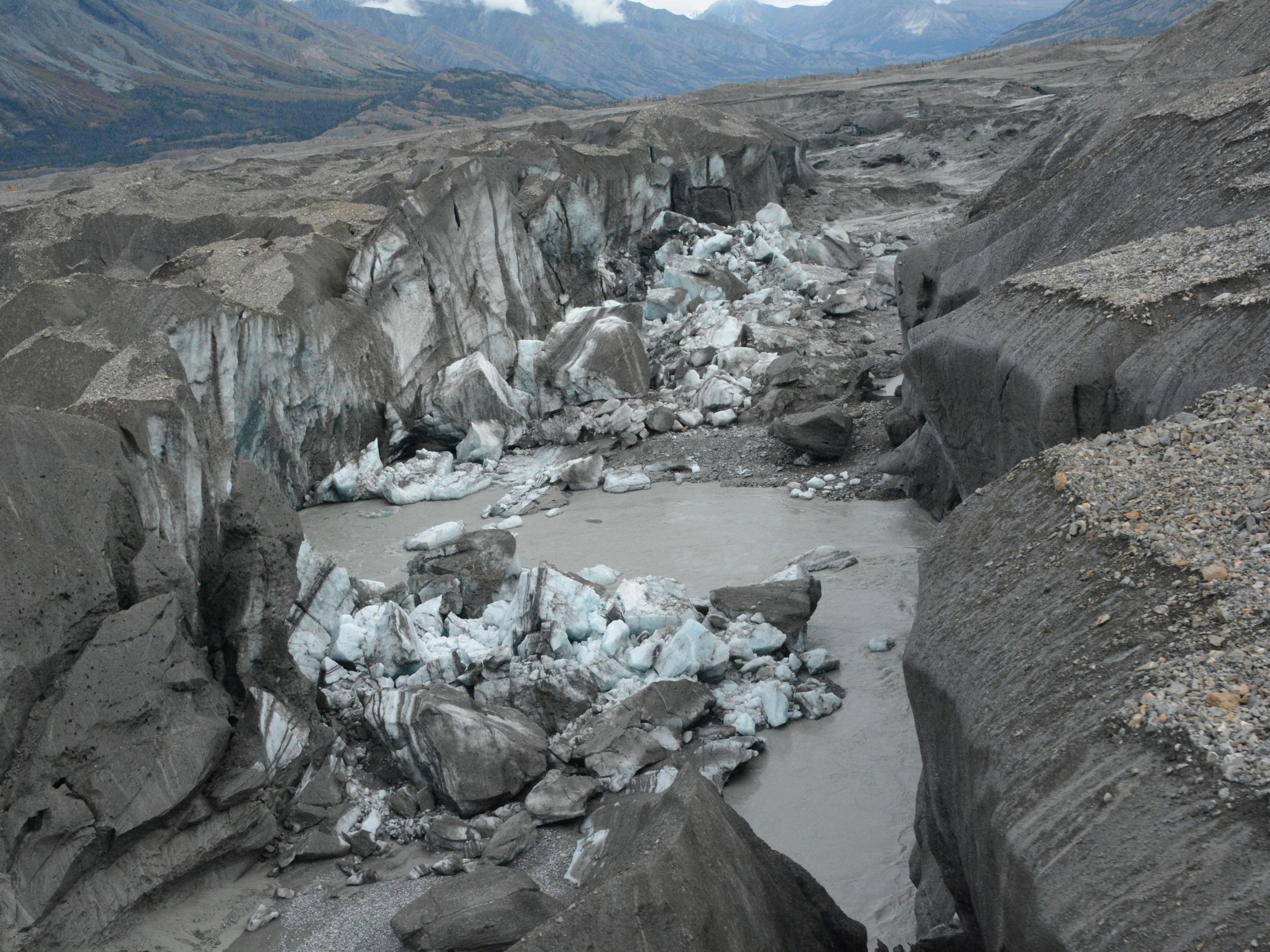Climate change causes huge Canadian river to vanish in four days
Slims River in Canada is no more as the water that once fed it now flows south, not north

Your support helps us to tell the story
From reproductive rights to climate change to Big Tech, The Independent is on the ground when the story is developing. Whether it's investigating the financials of Elon Musk's pro-Trump PAC or producing our latest documentary, 'The A Word', which shines a light on the American women fighting for reproductive rights, we know how important it is to parse out the facts from the messaging.
At such a critical moment in US history, we need reporters on the ground. Your donation allows us to keep sending journalists to speak to both sides of the story.
The Independent is trusted by Americans across the entire political spectrum. And unlike many other quality news outlets, we choose not to lock Americans out of our reporting and analysis with paywalls. We believe quality journalism should be available to everyone, paid for by those who can afford it.
Your support makes all the difference.A river disappeared in just four days after a melting glacier retreated so much that it opened up an alternative route to the sea.
Such dramatic changes are known in the geological record but this is believed to be the first time in 350 years that an entire river has vanished.
The Kaskawulsh glacier in Canada has retreated about a mile up its valley over the past 100 years, researchers reported in the journal Nature Geoscience.
Until last spring, it sent meltwater into the Slims River, which eventually flowed north to the Bering Sea.
However the glacier shrank back so much that the water was able to join the Kaskawulsh River, which flows south into the Gulf of Alaska.
And that saw the Slims River turn into a long thin lake and gradually start to dry up.
One of the researchers, Professor Dan Shugar, of the University of Washington Tacoma, said: “Geologists have seen ‘river piracy’, but nobody to our knowledge has documented it happening in our lifetimes.
“People had looked at the geological record — thousands or millions of years ago — not the 21st century, where it’s happening under our noses.”
River guards showed that the Slims fell abruptly over a period of four days from 26 to 29 May last year.
“There was barely any flow whatsoever. It was essentially a long, skinny lake,” Professor Shugar said.
“The water was somewhat treacherous to approach, because you’re walking on these old river sediments that were really goopy and would suck you in.
“And day by day we could see the water level dropping.”
The researchers found that a 30-metre canyon had been carved through the glacier.
“Meltwater was flowing through that canyon from one lake into another glacial lake, almost like when you see champagne poured into glasses that are stacked in a pyramid,” Professor Shugar added.
Kluane Lake, which was fed by water from the Slims, was about a metre lower by summer last year and is expected to fall further, to the point where there is no longer an outflow river.
Dall’s sheep, which are protected in the Kluane National Park, are now able to cross the Slims river bed into areas where they can legally be hunted.
Scientists believe the Kaskawulsh glacier is retreating because of a readjustment since the Little Ice Age between the 16th to 19th centuries and as a result of global warming.
Fellow researcher Professor John Clague, of Simon Fraser University, said: “I always point out to climate-change sceptics that Earth’s glaciers are becoming markedly smaller, and that can only happen in a warming climate.”
Join our commenting forum
Join thought-provoking conversations, follow other Independent readers and see their replies
Comments